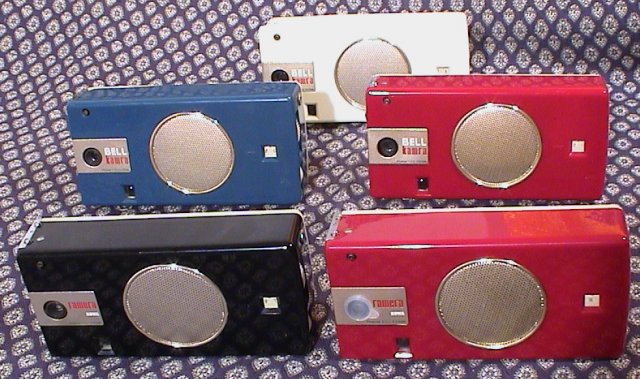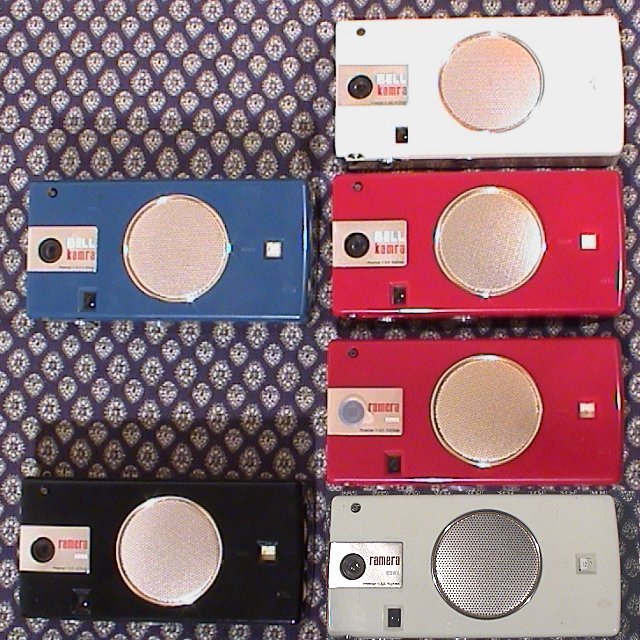In 1959 the Kowa Optical Company of Tokyo introduced the Ramera, a plastic transistorised AM radio combined with a 16mm camera. The Kowa Ramera was also sold as the Bell Kamera, distributed by the Bell International Corporation, and appears less often than the Ramera on the collectors' market. Both models were manufactured in black, blue, red and white. The back is often white on the non-white model. Red, black and blue backs have been seen on white versions.
The speaker grill and lens name plate are gold tone and the camera end is matt aluminium.

The kit included the radio-camera, carry case, ear plug, 9V battery (PP3), instruction book and a 12mm transparent lens cap. A horde of several gross new Rameras in all four colours were discovered in Honolulu in 1980 so many sold today are from this stock.
The radio is AM with frequency range 535-1605 KHz and a speaker with output of 70mW.
The camera section fill one end with most of the 145x72x35mm (5 3/4 x 2 7/8 x 1 3/8") volume being taken up by the radio. Infact 110mm is radio and only the top 37mm (including view finder) being the camera part. It weights 436g (15 1/4oz), including battery (48g), making if much heavier than the Minolta Sonocon of 1962 which is only 175g (6oz) and 121x24x22mm (4 3/4 x 1 15/16 x 7/8").
The camera is a fixed focus 23mm f3.5 Prominar lens (f3.5, 4, 5.6, 8, 11) with four shutter speeds marked either B, 50, 100, 200 engraved onto the plate or or B, L, 100, H on a metallic label.
The Ramera uses Minolta 16mm film cassettes and gives a 10x14mm image. Like many of the Minolta models it uses a thin layer of sponge on the film chamber door - both a dust and light trap. This sponge has now decayed to a fine brown but dry dust. Parts of the radio where similarly pad with sponge and will need to be removed if not already done so.
The shutter is primed by pulling on the key ring near the shutter release. This increments the film counter and winds on the film. Although double exposure is prevented the mechanism does not prevent you from winding on the next frame inadvertently.
The leather carry cases either match the Ramera or are contrasting so that black cameras have been sold with either black or white cases.
In 1960 the tiny camera element was sold as the Bell 16, without the bulk of the radio; perhaps the smallest camera to use the Minolta cassette. This is much less common than the Ramera or Kamera models.
http://www.indexstock.com/content/spy/spy12.asp
from
Spy Camera: A Century of Detective and
Subminiature Cameras
By Michael Pritchard and Douglas St. Denny .
